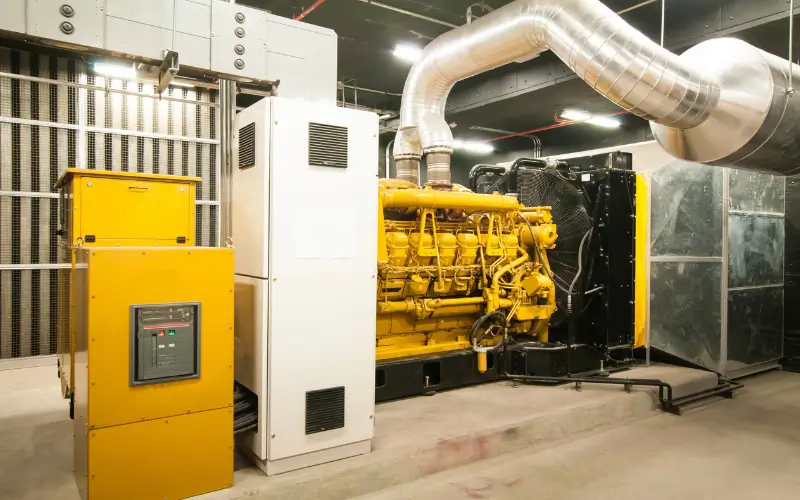An energy audit is a systematic evaluation of how energy is used in a building, facility, or process, aimed at identifying opportunities to improve energy efficiency and reduce costs. Whether you run a commercial building, a manufacturing plant, or manage a residential property, energy audits are essential tools to spot energy waste and uncover hidden problems that drive up utility bills.
However, simply conducting an energy audit isn’t enough. Identifying the problems is just the first step — understanding how to fix common energy audit problems is crucial to unlocking real savings and sustainability benefits.
In this article, we’ll explore the most frequent energy audit findings, explain why these problems occur, and provide practical, actionable solutions to fix them. From outdated lighting and inefficient HVAC systems to air leaks and behavioral inefficiencies, you’ll learn how to tackle these issues step-by-step.
By the end, you’ll be equipped with the knowledge to not only interpret your audit results but also implement effective fixes that optimize energy use, reduce costs, and contribute to a greener future.
Understanding Common Energy Audit Problems
Before diving into specific findings and fixes, it’s important to understand the types of problems that typically arise during an energy audit. These problems can broadly be categorized into technical, operational, and behavioral issues, each affecting energy performance in different ways.
Types of Energy Audit Problems
Data Collection and Measurement Errors
Sometimes, energy audits face challenges right from the data-gathering phase. Inaccurate or incomplete data can lead to misleading conclusions and missed opportunities for savings. Common errors include faulty meter readings, inconsistent monitoring periods, and improper use of measurement instruments.
Equipment Inefficiencies
Many energy audit problems stem from outdated, poorly maintained, or inefficient equipment. This includes lighting, HVAC systems, motors, and appliances that consume more energy than necessary due to age, design, or wear and tear.
Fixing equipment inefficiencies can require both careful specification and qualified installation to ensure new systems deliver projected savings and comply with electrical codes. Utilizing the expertise of Electrical Contractors Utah, or from elsewhere, can help in coordinating upgrade options and coordinating safety compliant installations, to ensure accurate energy savings calculations.
Behavioral and Operational Issues
Human behavior and operational practices play a significant role in energy consumption. Leaving equipment running unnecessarily, ignoring energy-saving protocols, or improper scheduling can all lead to wasted energy.
Building Envelope Problems
The building envelope—the walls, roof, windows, and doors—acts as a barrier controlling heat flow. Problems like air leaks, insufficient insulation, and poor sealing often result in excessive heating or cooling loads, driving up energy costs.
System Design and Maintenance Deficiencies
Improper system design or lack of routine maintenance can reduce energy efficiency. For example, oversized equipment, poor ductwork, or clogged filters limit system performance and increase energy usage.
Causes Behind These Problems
The root causes of energy audit problems often include aging infrastructure, lack of regular maintenance, insufficient training of staff, budget constraints, and absence of monitoring systems to track energy use and identify inefficiencies in real-time.
Impact of Unaddressed Energy Audit Problems
Ignoring audit findings can lead to higher operational costs, increased carbon footprint, equipment breakdowns, and missed opportunities for rebates or incentives. Over time, unresolved issues compound, making fixes more expensive and complex.
Typical Energy Audit Findings
Energy audits commonly reveal a range of issues across various systems and components within a building or facility. Understanding these typical findings helps prioritize fixes that deliver the most impact.
Lighting Issues
Outdated Lighting Fixtures
Many facilities still use incandescent or fluorescent bulbs that consume significantly more energy than modern alternatives. These outdated fixtures are not only inefficient but also have shorter lifespans, increasing maintenance costs.
Improper Lighting Controls
Lack of automated controls such as timers, occupancy sensors, or daylight harvesting systems results in lights being on when not needed. This leads to unnecessary energy consumption and higher bills.
HVAC System Problems
Inefficient Equipment
Older heating, ventilation, and air conditioning (HVAC) units tend to consume more power due to outdated technology or wear. Inefficient compressors, fans, and pumps contribute heavily to energy waste.
Poor Maintenance Practices
Neglected HVAC systems—dirty filters, clogged ducts, and refrigerant leaks—reduce performance and energy efficiency, causing the equipment to work harder and use more energy.
Incorrect Thermostat Settings
Improperly programmed thermostats or manual overrides can lead to heating or cooling when spaces are unoccupied, wasting energy unnecessarily.
Insulation and Building Envelope Deficiencies
Air Leaks and Drafts
Gaps around windows, doors, and through the building envelope allow conditioned air to escape and unconditioned air to enter, increasing heating and cooling loads.
Insufficient Insulation Levels
Walls, roofs, and floors lacking adequate insulation lead to rapid heat loss or gain, making HVAC systems work harder to maintain comfort.
Electrical System Concerns
Phantom Loads and Standby Power
Devices left plugged in or on standby mode continue to consume power, often unnoticed, adding to the energy bill over time.
Inefficient Motors and Drives
Older motors and mechanical drives in equipment such as pumps and fans often operate below optimal efficiency, consuming excess electricity.
Operational and Behavioral Issues
Inefficient Equipment Usage
Leaving machinery and equipment running during non-operational hours or under low-load conditions results in wasted energy.
Lack of Staff Training and Awareness
Without proper training on energy-saving practices, employees may unknowingly contribute to inefficient energy use through habits like leaving lights on or ignoring equipment shut-down protocols.
How to Fix Common Energy Audit Problems
Addressing the problems identified during an energy audit involves a combination of technical upgrades, operational changes, and behavioral improvements. Below are practical solutions tailored to the common issues.
Correcting Data Collection and Measurement Errors
Use of Accurate Measurement Tools
- Invest in reliable meters and sensors designed for your specific energy audit needs to ensure data accuracy.
Regular Calibration and Verification
Schedule periodic calibration of instruments and cross-verify data to prevent errors and improve the quality of audit findings.
Upgrading and Maintaining Equipment
Replacing Outdated Lighting with LEDs
Switching to LED lighting reduces energy consumption drastically while improving lighting quality and durability.
Regular HVAC Maintenance and Tune-ups
Implement routine checks such as filter changes, duct cleaning, and refrigerant level monitoring to keep HVAC systems running efficiently.
Installing Energy-Efficient Motors and Drives
Upgrade old motors to high-efficiency models and consider variable frequency drives (VFDs) to optimize motor speed and save energy.
Improving Building Envelope
Sealing Air Leaks
Use caulking, weatherstripping, and sealants to close gaps around windows, doors, and other penetrations to prevent air infiltration.
Adding or Upgrading Insulation
Enhance insulation in walls, roofs, and floors to reduce heat transfer, making temperature control easier and less energy-intensive.
Enhancing Operational Practices
Implementing Energy Management Systems
Use software and controls that monitor and optimize energy usage in real-time to identify inefficiencies quickly.
Employee Training Programs
Educate staff about energy-saving behaviors, such as turning off unused equipment and understanding peak energy periods.
Scheduling Equipment Usage Smartly
Establish protocols to run machinery only when necessary and during off-peak hours to reduce energy demand and costs.
Utilizing Advanced Technologies
Smart Thermostats and Controls
Install programmable or smart thermostats that adjust temperatures automatically based on occupancy and time schedules.
Automated Lighting Controls
Incorporate motion sensors, timers, and daylight sensors to ensure lighting is used efficiently without manual intervention.
Monitoring and Continuous Improvement
Periodic Follow-Up Audits
Schedule regular audits to track progress, verify implemented fixes, and uncover new opportunities.
Using Energy Dashboards and Reports
Leverage dashboards to visualize energy consumption patterns, making it easier to detect anomalies and plan improvements.
Case Studies and Real-World Examples
Practical examples help illustrate how fixing common energy audit problems can lead to significant energy savings and operational improvements. Here are a few real-world scenarios:
Example 1: Fixing Lighting Inefficiencies in a Manufacturing Plant
A mid-sized manufacturing facility replaced all outdated fluorescent fixtures with LED lighting and installed occupancy sensors in low-traffic areas. This upgrade reduced the plant’s lighting energy consumption by 40%, leading to substantial cost savings and lower maintenance requirements.
Example 2: HVAC Optimization in Commercial Buildings
A commercial office building identified inefficient HVAC equipment and poor thermostat settings during its audit. After upgrading to energy-efficient HVAC units, implementing a smart thermostat system, and scheduling regular maintenance, the building reduced its HVAC energy use by 25%, improving occupant comfort as well.
Example 3: Building Envelope Improvement in Residential Complexes
An apartment complex suffered from high heating bills due to air leaks and insufficient insulation. The management sealed gaps around windows and doors, upgraded insulation in attics and walls, and installed energy-efficient windows. These measures decreased heating and cooling energy demand by 30%, significantly cutting residents’ utility costs.
Tools and Resources for Fixing Energy Audit Problems
Having the right tools and resources can make addressing energy audit findings more efficient and effective. Whether you are an energy manager, auditor, or facility owner, these options help streamline the process.
Popular Energy Audit Software and Apps
- RETScreen: A clean energy management software that helps evaluate energy efficiency projects.
- Energy Star Portfolio Manager: Tracks and benchmarks energy use for buildings.
- Fluke Energy Analyze Plus: Provides detailed analysis of electrical power and energy data.
- Home Energy Saver: An online tool for residential energy audits and recommendations.
Guides and Checklists for Energy Auditors
- Comprehensive audit checklists that cover lighting, HVAC, building envelope, and operational practices.
- Step-by-step guides published by organizations such as the U.S. Department of Energy (DOE) and International Energy Agency (IEA).
- Training materials for energy auditors to ensure accuracy and consistency.
Professional Services and Consultancies
- Certified energy auditors and consultants offer expert advice tailored to your facility’s needs.
- Companies specializing in retrofit projects, energy management systems, and sustainability reporting.
- Access to rebates, grants, and incentives through partnerships with utilities or government programs.
Conclusion
Energy audits are invaluable tools for uncovering inefficiencies and pinpointing exactly where energy—and money—are being wasted. Common problems like outdated lighting, inefficient HVAC systems, building envelope leaks, and operational shortcomings can significantly inflate energy costs if left unaddressed.
The key to unlocking the full potential of an energy audit lies not just in identifying these issues but in implementing effective, targeted solutions. Upgrading equipment, sealing air leaks, improving operational practices, and leveraging smart technologies all contribute to lasting energy savings and improved sustainability.
Regular energy audits combined with continuous monitoring and staff engagement ensure that your facility stays on track to maximize efficiency. Taking prompt action on audit findings is essential—not only for reducing costs but also for minimizing environmental impact.
By understanding common audit findings and applying practical fixes, you can transform energy challenges into opportunities for savings and growth.
Frequently Asked Questions (FAQs)
1. What are the most common problems found in energy audits?
Common problems include outdated lighting, inefficient HVAC systems, air leaks in the building envelope, poor insulation, phantom loads, and inefficient operational practices.
2. How can I fix lighting problems identified in an energy audit?
Upgrading to LED fixtures, installing automated controls like motion sensors and timers, and ensuring proper maintenance are effective ways to fix lighting inefficiencies.
3. Why is HVAC system maintenance critical for energy efficiency?
Regular maintenance prevents equipment from working harder than necessary due to issues like dirty filters or refrigerant leaks, which can drastically increase energy consumption.
4. How often should I conduct an energy audit?
Typically, a comprehensive energy audit is recommended every 3-5 years, but more frequent audits may be beneficial for large facilities or those undergoing changes.
5. Can behavioral changes really impact energy savings?
Yes, staff awareness and training on energy-saving habits can significantly reduce unnecessary energy use and complement technical improvements.
6. What tools help with fixing energy audit problems?
Energy audit software like RETScreen, Energy Star Portfolio Manager, and tools for monitoring and managing energy use can aid in identifying and fixing issues.




